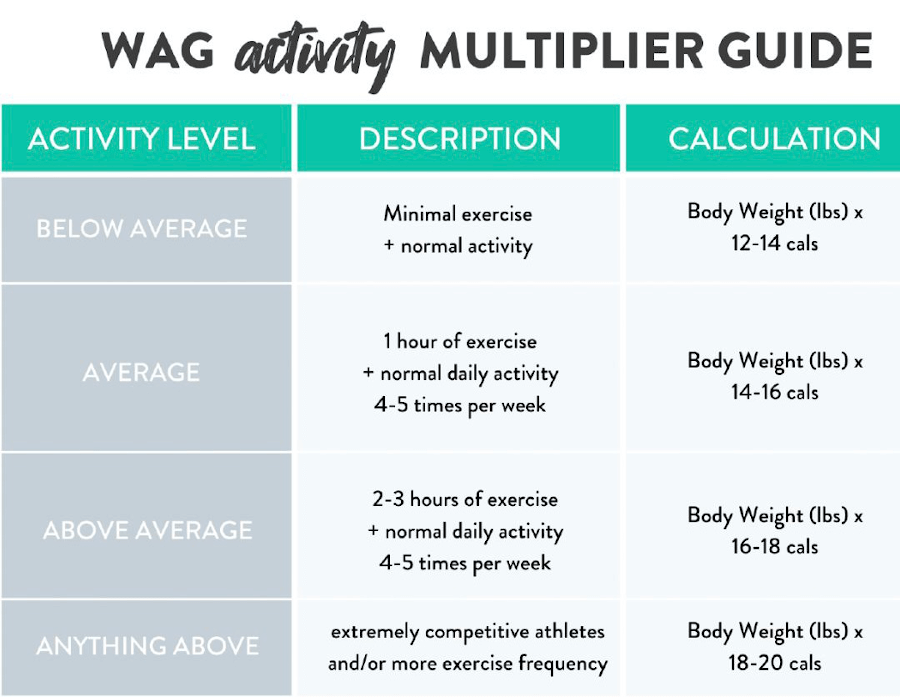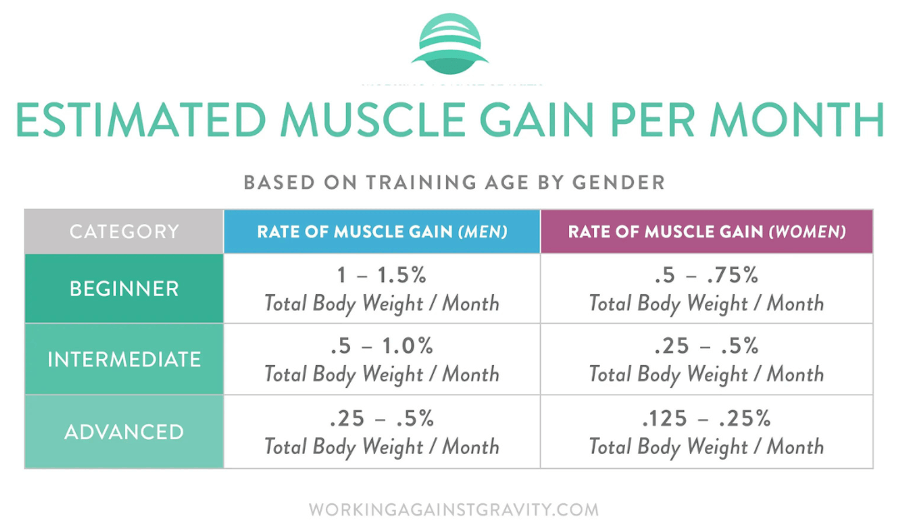
Do you want to know a secret? How about some of the biggest secrets of macros for muscle gain? Regardless of your goals, muscle mass is a critical component for athletic performance and long-term health [1]. We’re covering everything from why nutrition is important, to what your macros for muscle gain should be. Come along for the ride and let's get you some gains!

How to Build Muscle
Ready for the secret sauce?
The two basic requirements to accomplish muscle growth are consistently applied nutrition and exercise protocols. Let’s dig into each…
How Does Exercise Build Muscle?
The first important ingredient in the muscle-gaining recipe is exercise.
Advertisement
Muscle size and mass increase when you continually challenge the muscles to deal with higher levels of resistance or weight. This process of forcing your muscles to adapt to in this way is known as muscle hypertrophy [2].
Hello, strength training!
Related: Gain Train: Tips for Adding Muscle
What is Muscle Hypertrophy?
Muscle hypertrophy occurs when your muscle fibers sustain enough damage or injury to trigger the body to respond. The body takes action by working to repair the damaged fibers by fusing them. This increases the mass and size of the muscle over time [2]. Starting to see how exercise is a key ingredient in building muscle?
The important thing to keep in mind is that you’re different from the person benching next to you at the gym. Individual muscle growth rates vary from person to person. While strength training is one of two key ingredients in muscle gain, it doesn’t happen overnight.
Advertisement
Consistency and patience are key components as work for muscle growth gains. Whether you follow a strength training plan or have the experience to program for yourself, it is crucial that you emphasize consistency over a prolonged period of time. Weeks and months of consistency, verse days, will make the difference.
The Importance of Recovery for Muscle Gain
It is also worth noting that rest and recovery are part of exercise and a huge part of the muscle-gaining process.
You’ve likely heard a coach drill the importance of rest days; but why are rest days a key component of muscle gain? How can training less equate to gaining more muscle?
Your body needs time to repair your muscles and your central nervous system (CNS) also needs time to rest and reset. If you are constantly breaking your muscles down and do not make time for your body to recover, your muscles will not have a chance to grow. Similarly, the intensity you are constantly achieving to trigger muscle hypertrophy will undoubtedly impact your CNS. Being deliberate about resting both your body and your mind will ensure you maximize your return on investment from your hard work in the gym.
And, as you consider rest and recovery, keep sleep at the forefront of your recovery routine. Check out how to maximize your sleep gains here.
Advertisement
How Does Nutrition Help Build Muscle?
Do you feel like you are putting in a lot of hard work at the gym chasing those muscle gains, but are not seeing results? Chances are your nutrition is lacking.
The second part of the muscle gain formula is nutrition. While it may be the second variable in the formula, nutrition tends to be the part that is overlooked most often. If the way you are fueling your body does not enable muscle growth, you are likely going to miss out on potential gains and not reap the benefits of your hard work in the gym.
The saying “you can't out-train a poor diet” is as applicable to muscle gain as it is to fat loss. The amount and type of food you are eating must align with your muscle gain goals.
Additionally, just like in exercise, consistency is absolutely critical. Many people do not realize that muscle growth takes time and that a muscle gaining phase will likely be longer and slower than a fat loss phase. Once again, staying patient, executing your plan, and trusting your plan is most important in a muscle-gaining phase.
Simply put, appropriate nutrition is a must. What “appropriate” means is as much an art as it is a science which is why WAG Nutrition coaches are masters at helping their clients reach muscle-building goals. Not only do they know the science, but they’ve helped hundreds of clients reach similar goals and have perfected the art as well.
Advertisement
Let’s talk a bit about what it takes to gain muscle and what your macros for muscle gain might look like.
Calculating Macros for Muscle Gain
Calculating macros for muscle gain may sound complex. Not to worry! It is not as complicated as you might think! It starts with an easy concept: Caloric Surplus.
What is a Caloric Surplus?
A caloric surplus is when your caloric intake is greater than your energy expenditure. In other words, you are in a calorie surplus when you intake more calories from food than you are burning throughout the day.
As an example, someone who eats 2,000 calories and burns 1,600 on any given day is in a caloric surplus for that day. In theory, a caloric surplus will trigger an increase in weight over time as the body retains and stores the extra calories.
A caloric surplus is one of the ingredients for creating an environment for muscle gains to happen. Paired with appropriate resistance training and recovery (remember, we chatted about this above!) you will trigger your body to use those extra calories to build muscle. Without exercise, those calories would likely be stored as fat.
Advertisement
How to Calculate Your Starting Caloric Surplus
The first step in finding your necessary caloric surplus is calculating your maintenance calories. Let’s break down the steps to get a general idea of what this would look like.
- Estimate Maintenance Calories
Maintenance calories are the number of calories you would need to keep your current weight. Maintenance calories are impacted by several things such as age, gender, activity, genetics, and current weight. To estimate your maintenance calories, multiply your body weight by an activity multiplier based on your daily activity and lifestyle (see graphic below).
Example:
135 lbs (body weight) x 14 (activity multiplier) = 1,890 calories for maintenance*

Advertisement
- Determine Caloric Surplus
Now that you have calculated your maintenance calories and now you can start determining how many additional calories you may need to eat to promote your muscle gain goals. Just keep in mind that you must eat above your maintenance calories (caloric surplus) to make muscle gains!
Time for a little math and science action.
With the above information in mind as a guide, WAG recommends starting with an increase of 10-15% over maintenance calories. Generally, women should start on the lower end, and men should start on the higher end.
Timeline and training must also be taken into account. If you’re training more or need to put on muscle faster you can likely err on the higher side of that percentage range.
Let’s use the same example as above:
Advertisement
135 lbs (body weight) x 14 (activity multiplier) = 1,890 calories for maintenance + 10% (189) = 2,079 calories
In this example, a 10% surplus would lead to just under 200 additional calories each day. If you multiply 200 calories by 30 days (average days in a month) that would equal an extra 6,000 calories a month.
Pro Tip: Something to take into account when determining your ideal caloric surplus is the timeline associated with your muscle gain goals. We’ll cover this in more detail in the “Setting Reaslitic Muscle Gain Goals” section below.
In summary, in order to calculate your starting caloric surplus, you need to first calculate your maintenance calories. Then you can determine your caloric surplus from there by taking into account the amount of weight you want to gain as well as the timeline associated with your goals!
Macros to Help Build Muscle
Now that you know how to calculate a caloric surplus, you can get more in-depth and determine your macros to build muscle. Let’s break this down macro by macro!
Advertisement
Calculating Protein in a Caloric Surplus
Protein is an important ingredient to consider in the muscle-gaining recipe. Without the proper amount of protein, gains in the muscle growth department will be limited.
What should your protein numbers look like if you have a goal of gaining muscle?
The recommended daily allowance (RDA) for protein is 0.4g/lb (0.8-1g/kg) of body weight. This recommendation is for people who live a pretty sedentary lifestyle. If you are aiming to gain muscle, you most likely will be training and moving more. In turn, you’ll need more protein to reach your goals.
As a starting point, WAG generally aims for 0.8-1.3g/lb bodyweight for those with muscle-gaining goals. The key word is “starting point”. One of the benefits of WAG and working with a 1:1 coach is that you constantly re-evaluate and assess progress together. They’ll help you identify what is working (and what is not) and will adjust your macros as you go.
Example:
135(lbs) x 1.0g protein per pound = 125 grams of protein
Advertisement
Calculating Carbohydrates in a Caloric Surplus
As the primary source of fuel, carbohydrates are also important for muscle gains! After all, you need energy to perform in the gym! As a general rule of thumb, WAG recommends 1.4g/lb as a reasonable starting place [1].
Example:
135(lbs) x 1.4g = 189 grams of carbs
Once again, this is a starting place! Adjusting as you go, listening to your body, and evaluating how you are feeling and performing are important parts of the process.
Calculating Fat in a Caloric Surplus
Similar to carbohydrates, there is no one-size-fits-all for fat intake to have maximum muscle growth. A balanced approach with protein and carbohydrate consumption is ideal [1].
Taking into account your total daily calories and figuring out your daily protein and carbohydrate intake - the rest of your calories can then come from fat sources.
Advertisement
Learn more about this here with a free macro calculator.
The Best Foods for Muscle Gain
Now that we have discussed macros to build muscle, we can get into the best foods for muscle gain. Here’s the main thing to remember: the best foods will include lean PROTEIN!
This is not because carbs and fats are not important. As mentioned in earlier sections, all three macros have a deliberate place in a diet that enables muscle growth. However, protein is of particular importance as it is a crucial player in muscle growth and recovery.
At WAG, there are so many helpful resources:
Protein powder is also a great, quick option. Making a plan and prioritizing your protein intake will surely set you up for success!
Advertisement
Tracking Muscle Gain Progress
Muscle gain progress can be a slow process. In fact, it can often be longer than a fat loss journey. Tracking various metrics is necessary because progress isn’t always readily apparent.
At WAG, we use a software called Seismic that gives clients a place to track all kinds of data, from body weight and daily macro intake to water intake, sleep, mood, progress pictures, and so much more. Seismic is just an example of one data tracking tool. There are a number of other ways to do it (handy, dandy journal, anyone?).
Find something that works for you and make good use of it. It may seem redundant or tedious at times, but having weeks and months of data is a really powerful tool to not only see progress across an extended period of time but also capture and identify other insights along the way.
When it comes to assessing muscle gain, some of the main metrics you’ll need to keep tabs on are:
- Average weight from week-to-week
- Performance in the gym (PRs, increased work capacity etc.)
- Recovery
- Sleep
Setting Realistic Muscle Gain Goals
Now that you have your muscle-gaining macros all set, you’re likely wondering how long it will take to start seeing and feeling results.
Advertisement
Setting realistic muscle gains goals can help manage expectations and ensure you don’t embark on an impossible mission. The below chart can be a useful guide.

You will see 3 different categories in the chart below:
Beginner - typically somebody in their first year of training. This person would, in theory, be able to process most training loads in the gym on a weekly basis.
Intermediate - somebody who is past their first few years of training. This person should be able to process most training loads in the gym on a monthly basis.
Advertisement
Advanced - somebody who has been training for 3+ years. Progress is only seen when comparing multiple months or a year.
Let’s keep using our hypothetical example to determine how you could assess your progress by analyzing your body weight data. Utilizing a month's worth of daily body weight readings you can determine your average body weight for that month to gain insight into how much or how little your bodyweight has increased. You can then use this as a factor in deciding to make any possible adjustments moving forward.
Not to worry, finding your average monthly weight is pretty simple (There are also several apps that help you with this math, including our coaching software, Seismic). You can calculate your weekly average by adding up your daily morning weigh-ins for the last seven days and dividing that by seven.
Example: (daily weight in pounds for the past seven days) 135.4, 136.2, 135, 136.1, 135.9, 136.4,136.6 = 951.6 / 7 = 135.9 weekly average weight.
To find your monthly average - keep tracking your daily weigh-ins and at the end of the month divide that by the total days of the month! You could also take your weekly averages and divide that by the total weeks in the month.
Advertisement
These insights will help you see where you fall and what adjustments might need to be made. If you're under the expected rate, increase your surplus. If you're over the expected rate and you're noticing unwanted fat gain along with muscle gain, decrease your surplus. Once again this takes time - avoid making changes too soon and collect your data to help assess what changes need to be made.
Coaching Tip: body weight is not the only way to determine if you are actually building muscle (more on this below).
How Can I Tell If I'm Building Muscle?
One of the awesome things about working with a WAG coach is that you focus on multiple measures of progress. By focusing on other measures of progress you will be able to see gains that might not be the first thing you think about (like a weight on the bar or the number on the scale). Some examples include:
- Pictures will show body composition changes (i.e., muscle definition)
- PR’s in the gym
- Clothes fitting differently
- Measurement changes
Remember, building muscle takes time! Be patient and focus on consistency.
Making Macro Adjustments to Build Muscle
While building muscle takes patience, consistency, and accuracy, there is one last piece of the muscle-gain puzzle.
Advertisement
You may need adjustments to your macros depending on your progress and the feedback your body gives you. This is why recording data such as your daily macros number, daily body weight, weekly weight average, water intake, sleep, workout performance, etc. is so important. All this data is what you, or your 1:1 nutrition coach, can utilize to inform any potential adjustments to your plans.
Now that you have all the WAG secrets, what are you waiting for?
Muscle gains… LOADING! It requires both consistent exercise and nutrition over a period of time. Having a plan, trusting that plan, and sticking to it will ultimately make all the difference. Be patient, be consistent, and trust your hard work! If you want additional help, a 1:1 WAG coach is always ready to help you reach your nutrition, health, and fitness goals.
References:
- Schoenfeld, B. (2016). Science and development of muscle hypertrophy. Champaign, IL: Human Kinetics.
- Jayne, Leonard. (2020, January 8). How to build muscle with exercise. Medical News Today. Retrieved From https://www.medicalnewstoday.com/articles/319151#how-does-muscle-grow-in-the-body
- Helmes, Eric (2019). The Muscle and Strength Pyramid: Nutrition. Independently Published.
- McDonald, Lyle. (2017, August 11). Determining Calorie Intake For Muscle Gain. Body Recomposition. Retrieved From https://bodyrecomposition.com/muscle-gain/calories-for-muscle-gain
Get a WAG Coach
Working Against Gravity has led the macro tracking and health space for over a decade. Our team doesn’t just understand the science of nutrition—we’ve spent years mastering the art of tailoring it to fit your life. That means no cookie-cutter plans, just real strategies that have worked for over 30,000 people.
Choose from our membership options and start working with an expert 1-on-1 coach today.



